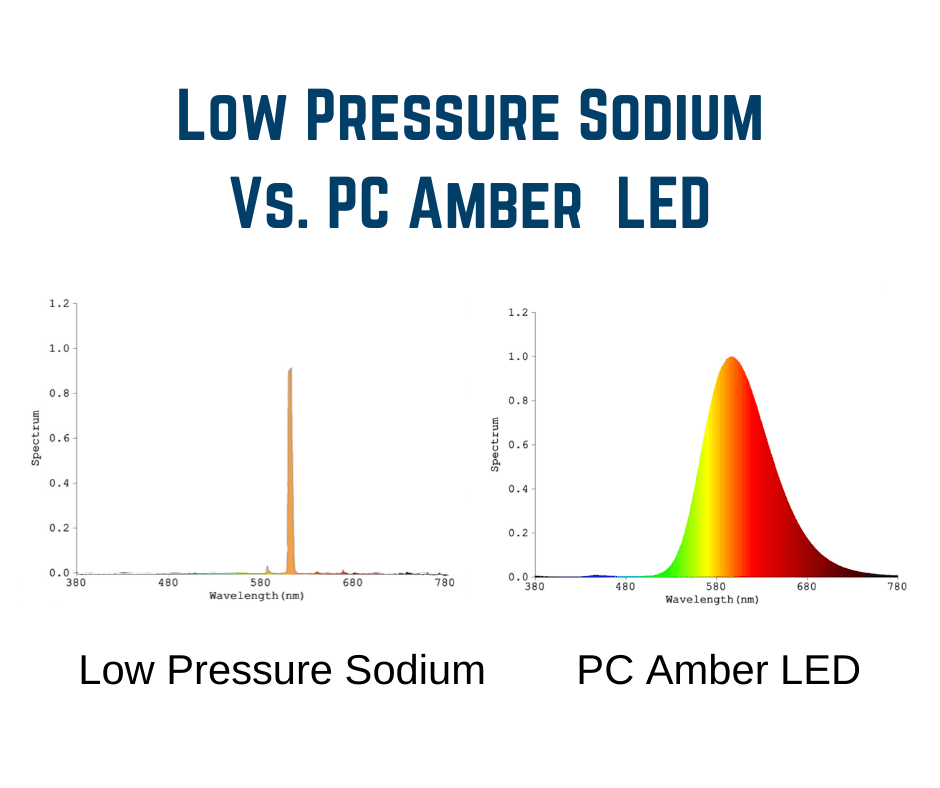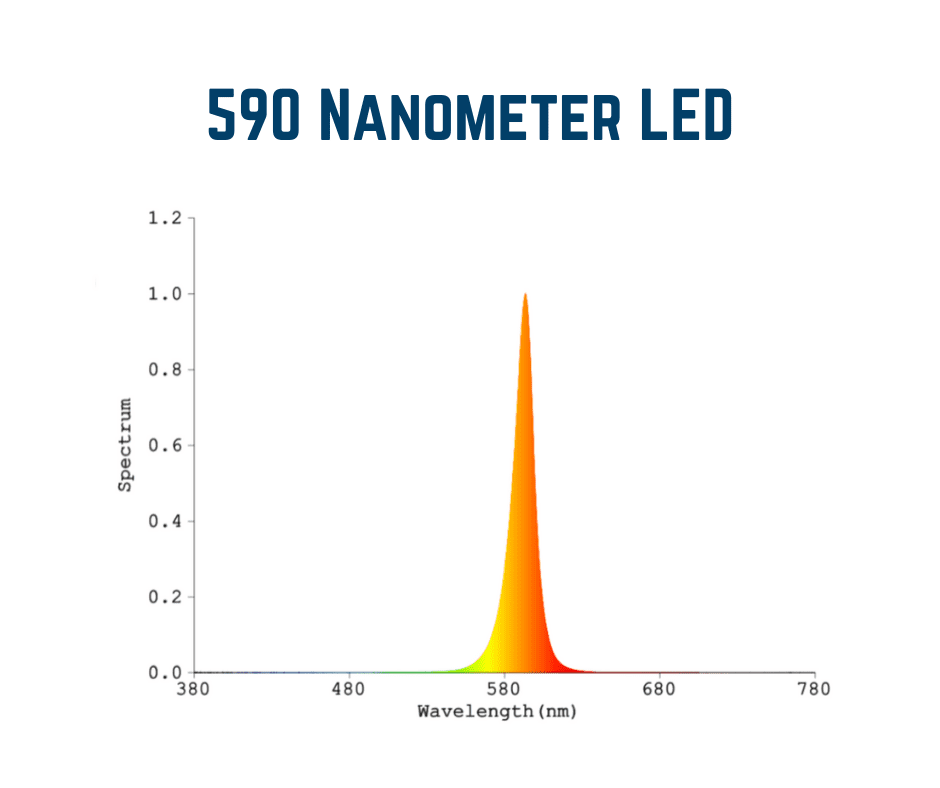What is Amber LED, and What are these LEDs Used For?
As lighting specialists, we receive many questions about the various types of LED light. One of these categories is what is known as amber LED. Amber LED may refer to several things. Although one might think it just describes any orange-colored light that’s easy on the eyes, there are so many more aspects of this versatile color than many people might assume. Amber LED is not a monolith, and although it may look uniform to the untrained eye, there are many different applications and wavelengths of this category of light.
Key Takeaways
-
-
Diverse Applications: Amber LEDs are used in a variety of fields, including wildlife protection, dark-sky compliance, and street lighting, showcasing their versatility.
-
Specific Types for Specific Needs: Different types of amber LEDs, such as PC Amber, 590 Nanometer Amber, and 2200K, cater to specific requirements like color rendering and environmental impact.
-
Environmental and Functional Benefits: Amber LEDs not only provide efficient lighting solutions but also help in reducing light pollution and protecting wildlife, making them an environmentally friendly choice.
-
Applications of Amber LED Lights
Amber LED lights can be used for, but are not limited to, the following applications:
- Meeting Florida Fish & Wildlife Conservation Commission regulations (FWC)
- Other Turtle and Wildlife Protection
- Decorative purposes & ambient lighting
- Military and astronomy
- Dark-sky friendly requirements
- Replacing high-pressure and low-pressure sodium lights
This list is far from all the documented uses of different types of amber LEDs, but they are some of the most popular ones. What are the different kinds of amber LEDs and what are they used for? Read on to find out.
PC Amber (1700K)
PC Amber, or 1700K, is a specific type of amber LED light that is a suitable replacement for low-pressure sodium lighting, which is an outdated style of induction lighting. It has a broader spectrum and as a result, a better color rendering index than LPS, which can be seen in the chart to the right indicating the difference
Replacing low-pressure sodium is far from the only use for PC amber LED. In particular, PC amber is used for dark-sky applications such as in Hawaii or Flagstaff. Many states and jurisdictions now require the use of PC amber LED that is also fully shielded and under a certain lumen output in order to keep the night skies clear.
This is especially important to astronomers because certain wavelengths of UV light can obscure the stars and make telescope viewing impossible. PC amber is a perfect solution for this. Read more about PC Amber Lights here.
590 Nanometer Amber
The second major category of amber LED is 590 nanometer LED. This is also a specific wavelength of light that appears as a dim orange light to the human eye. However, 590-nanometer lighting has some unique properties that make it highly useful for certain outdoor applications.
590 nanometer amber LED is used for turtle and wildlife-friendly applications that do not require shielding, but do require a specific type of lighting. Turtles and other types of wild animals cannot see light emitted from a 590-nanometer fixture, making it a great choice for lighting parks, trails, beachside areas, and other places where nature and wildlife should not be disturbed.
Although outdoor light fixtures in 590-nanometer amber are orange lights, they do not allow for good color rendering so this may be an important factor to note in choosing what type of amber lighting you need. Read more about 590 nm Amber Lighting here
FWC Certified Lighting
FWC-certified lighting is a specific kind of 590-nanometer LED lighting that also makes use of shields to direct the light from a fixture downward. For a light fixture to be considered FWC compliant, it must be three things:
Long: The fixture must come in a long wavelength (which 590 nanometer is) so that sea turtles and other animals cannot see the light or be disturbed by it.
Low: FWC-certified fixtures must be mounted low to the ground. The lower, the better, to prevent uplight or any similar light pollution.
Shielded: The fixture is surrounded by a metal shield, or baffle, which directs the light only downward and prevents backlight and uplight.
Shop FWC CertifiedThe full criteria list for whether or not a fixture is considered FWC-compliant can be found here on the Florida Fish and Wildlife Conservation Commission’s website. Read more about FWC Turtle Lighting here
2200K (HPS Color)
Why is 2200K on here, you might be asking? Recently, LED lighting technicians and specialists have started to refer to this Kelvin (color temperature) as HPS color because it replaces traditional high-pressure sodium lights. It is also known as “amber white” because it is technically in the amber LED light family due to its warm orange glow. 2200K has the broadest and highest CRI rating of all amber LED types. 2200K can be used both indoors and outdoors, and it was created to replace high-pressure sodium lighting for streetlights. The benefit of 2200K is that the LED version lasts a far longer time and usually has a higher lumen output than traditional high-pressure sodium.
Shop 2200K HPS ColorIn addition, if you are looking for the aesthetics of amber light for your project but don’t need a specific nanometer, this would be your best bet as it’s versatile and has a better color rendering index than the aforementioned types of amber LED.
Conclusion
Amber LEDs offer many applications and benefits beyond their appealing orange hue. Amber LEDs are crucial in various fields, from meeting wildlife protection standards to enhancing night-sky visibility for astronomers. Whether it is the highly specific 590-nanometer amber used for turtle-friendly lighting or the versatile 2200K amber white for streetlights, these LEDs provide sustainable and efficient lighting solutions. Understanding the different types and uses of amber LEDs can help you select the perfect lighting for your needs, ensuring functionality and environmental friendliness.
Amber LED Lighting Frequently Asked Questions
You have Amber LED Lighting questions. We have answers. If you have a question that isn’t answered below, contact an Access Fixtures lighting specialist at (800) 468-9925 or click here to visit our customer service page.
What is an Amber LED?
Amber LED refers to LEDs that emit an orange-colored light. They are available in various wavelengths and serve multiple purposes, such as wildlife protection and dark-sky compliance.
What are the main types of Amber LEDs?
The main types are PC Amber (1700K), 590 Nanometer Amber, and 2200K (HPS Color). Each type has specific applications and characteristics.
Why are Amber LEDs used in wildlife protection?
Amber LEDs, especially 590 nanometer, emit light that is less visible to certain wildlife, such as sea turtles, preventing disruption to their natural behaviors.
What does FWC-certified lighting mean?
FWC-certified lighting adheres to Florida Fish & Wildlife Conservation Commission regulations, requiring lights to be long-wavelength, low-mounted, and shielded to protect wildlife.
How does PC Amber LED benefit astronomers?
PC Amber LEDs reduce light pollution by minimizing UV light emissions, making it easier for astronomers to observe the night sky.
Can Amber LEDs replace traditional streetlights?
Yes, 2200K Amber LEDs are designed to replace high-pressure sodium (HPS) lights, offering better color rendering and longer lifespan.
What is the difference between PC Amber and 590 Nanometer Amber?
PC Amber (1700K) is used primarily for dark-sky applications and replacing low-pressure sodium lights, whereas 590 Nanometer Amber is ideal for wildlife-friendly applications due to its specific wavelength that is less visible to certain animals.
How long do Amber LEDs typically last?
Amber LEDs, like most LEDs, have a long lifespan, often exceeding 25,000 to 50,000 hours of use, which is significantly longer than traditional incandescent or sodium lights.
Are Amber LEDs suitable for indoor use?
Yes, certain types of Amber LEDs, such as the 2200K, can be used both indoors and outdoors, providing a warm, ambient light suitable for various settings.
What does “CRI” mean, and why is it important for Amber LEDs?
CRI stands for Color Rendering Index, which measures the ability of a light source to accurately render colors compared to natural light. A higher CRI in Amber LEDs, like the 2200K, means better color accuracy and visual appeal.






